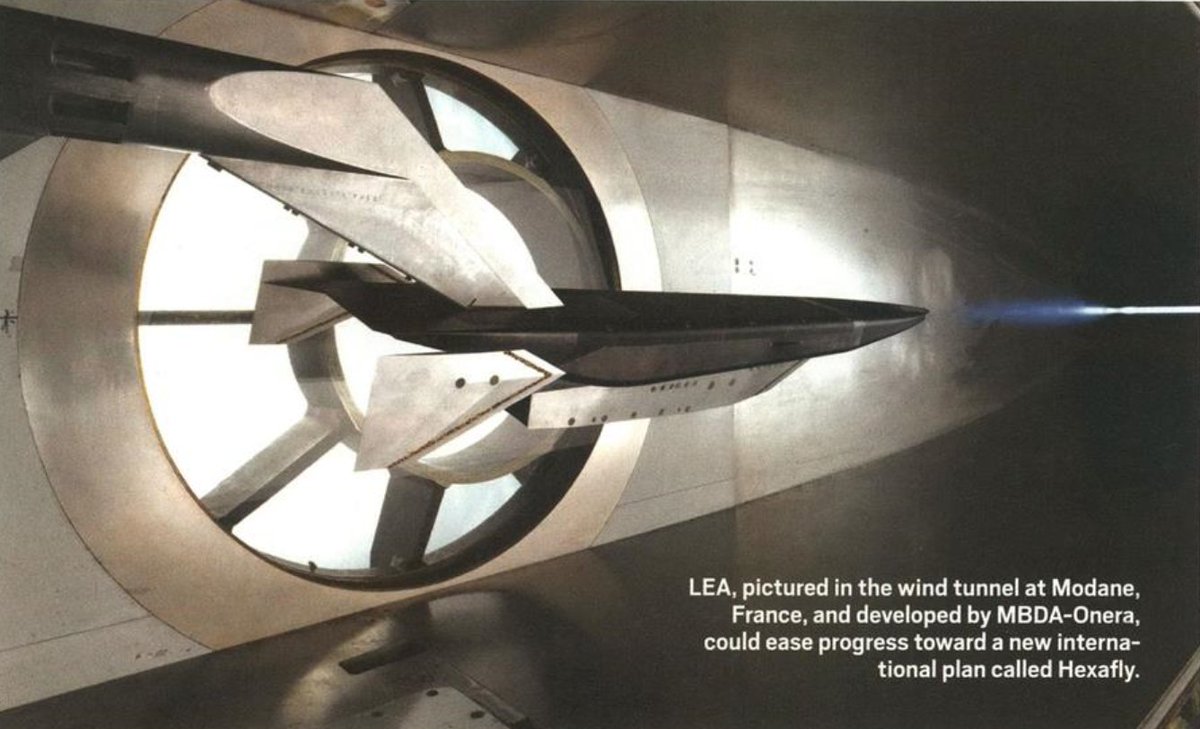
Complex Air Defense drops tomorrow, but before we start livetweeting the release event, one more thread on historical hypersonic programs: the French/Russian Lyotnii Experimentalii Apparat (LEA) air-breathing vehicle. 



NATO RTO diagram of the Russia/France work breakdown. Program began Jan 2003 and PDR completed in 2006. Goal to sustain Mach 4 - 8 for up to 30 seconds in flight tests. Flight tested 4x between 2014 - 2015. 

Some detailed views of the vehicle, incl. pressures and heat fluxes, propulsion and fin interaction, and inlet opening/closing simulation. 







Hypersonic systems are tightly integrated designs. From our forthcoming report: "changes to a hypersonic airframe’s structure, avionics, or heat shield materials can alter design considerations for every other subsystem." 

"A hypersonic defense design which exploits [such] 'tight tolerances...[and] unique sensitivities that hypersonic weapons must overcome' would impose costs on adversaries...hypersonic defenses could stress an adversary's design cadence."
Don't forget to ask live questions to our panelists! Monday, Feb 7, 10:00 EST.
csis.org/events/complex…
csis.org/events/complex…
Adding a direct link to the question form as well:
docs.google.com/forms/d/e/1FAI…
docs.google.com/forms/d/e/1FAI…
• • •
Missing some Tweet in this thread? You can try to
force a refresh








